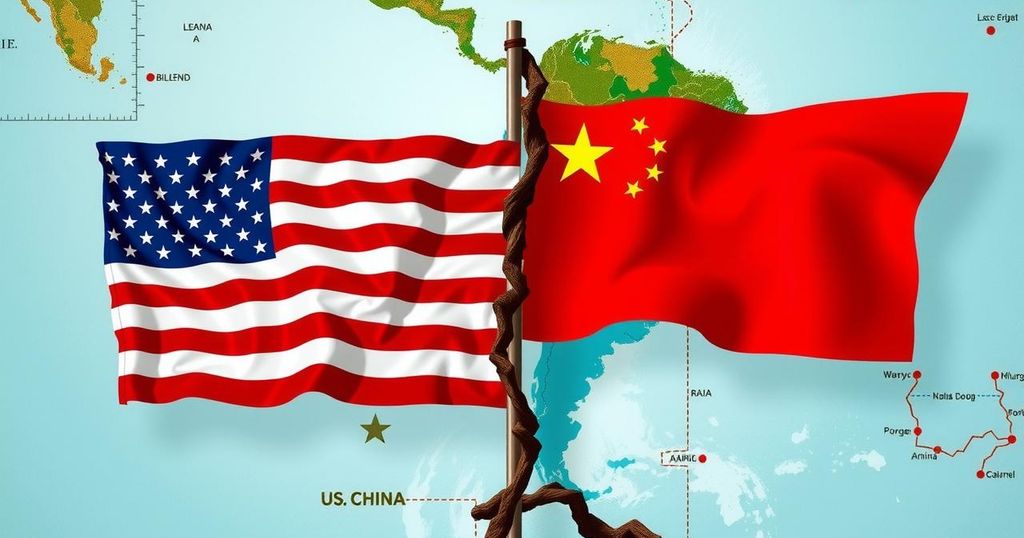China’s Expanding Influence in Latin America and Its Geopolitical Implications

China’s growing influence in Latin America, particularly in energy resources, poses challenges for the United States. Key materials like lithium, nickel, and cobalt are critical to renewable energy; China dominates their production and distribution. The potential re-election of Donald Trump could escalate tensions with China amidst his promises of aggressive trade measures, reshaping U.S. relations in the region.
The geopolitical landscape surrounding Latin America’s energy resources is shifting, particularly as China expands its influence in the region. With South America rich in resources essential for renewable energy and electric vehicle production—such as lithium, nickel, and cobalt—China has emerged as a dominant player. Currently, Chinese companies control significant portions of these critical resources, including substantial stakes in Chile’s lithium production and Argentina’s lithium projects. Moreover, Beijing’s investments in wind and solar technologies underscore its control over Latin America’s clean energy sector.
At present, China has established free trade agreements with multiple Latin American nations and has signed on with 22 countries under the Belt and Road Initiative (BRI). This growing influence is exemplified by China’s control over Chile’s energy distribution and its recent acquisition of certain energy assets in Peru, which underscores the strategic importance of energy in diplomatic relations. In contrast, the Biden administration has attempted to fortify the United States’ supply chains but has faced challenges in competing with China’s established trade networks.
The potential re-election of former President Donald Trump presents new dimensions of conflict within this context. His administration’s trade policies may lead to a more aggressive stance against China and could shift the dynamics of U.S.-Latin American relations significantly. As Trump has indicated intentions to implement tariffs and trade measures, his approach could exacerbate the already tense geopolitical climate in the region. Experts highlight the threat posed by China’s intensifying reach into Latin America, particularly its relationships with authoritarian regimes, which could further isolate U.S. interests and allies.
In summary, the intricate relationship between geopolitical maneuvers and energy resources in Latin America illustrates the potential for conflict as nations vie for influence. China’s robust investments in the region present challenges for both the current U.S. administration and a potential future Trump-led government, which may adopt a more confrontational approach to counter Chinese dominance and bolster American ties with Latin America.
The article highlights the evolving geopolitical struggles surrounding valuable natural resources in Latin America, primarily centered on China’s aggressive investments and influence over crucial energy sectors. It sheds light on the rich deposits of lithium, nickel, and cobalt found across South America, which are essential for the clean energy and electric vehicle industries. The text explores the implications of China’s Belt and Road Initiative and its recent maneuvers in securing energy distribution in various countries, revealing the complex interplay of global politics influenced by resource control.
In conclusion, the increasing presence of China in Latin American energy sectors poses significant challenges and opportunities for both regional countries and the United States. The potential re-election of Donald Trump may herald a more confrontational U.S. policy, putting into focus the necessity of addressing the strategic implications of China’s growing dominance. As the situation continues to evolve, it becomes imperative for the U.S. to reassess its foreign relations strategies in the context of energy resources and geopolitical alliances in Latin America.
Original Source: oilprice.com








